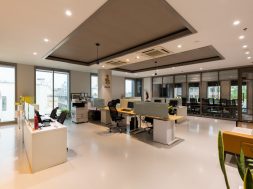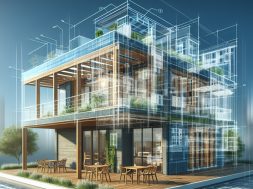“Making the network central to the business strategy of urban planning will facilitate the ability to provide vital public services over the internet. Cities of tomorrow can become more liveable than ever before through a networked urban infrastructure”, writes E R Ashok Kumar, Vice President, Cisco Services, Cisco India & SAARC
It is expected that by the year 2050, there will be at least 100 new cities in the world with more than one million people; and approximately 500 million people will be added to the world’s cities over the next five years. According to a UN report, by 2030, 40.76 per cent of India’s population will live in urban areas as against the present 29 per cent. As world populations shift to urban areas, community leaders are being pressed for answers related to overcrowding, pollution, budget constraints and inadequate infrastructure. Governments and urban planners are looking for ways to address this growing urban sustainability challenge.
Increased development of new cities around the globe demands the need to renew outdated 20th century infrastructures and requires the creation of new urban design, metropolitan governance, and infrastructure investment models. As city authorities and governments look for ways to do more with less, they seek to effectively coordinate, deliver services to citizens and provide them with better access.The network is critical for enabling communities to create such an environment.
A network-based approach can help government agencies and urban planners to respond more effectively and efficiently to a number of urban sustainability challenges. Adding intelligence to the network enables the deployment of converged technologies that deliver critical information to those who need it, when they need it, and in the form that allows them to take immediate action.
Network as an urban platformMaking the network central to the business strategy of urban planning will facilitate the ability to provide vital public services such as transportation, utilities, security, entertainment, education, and healthcare over the internet. Cities of tomorrow can become more liveable than ever before through a networked urban infrastructure. As the new channel for collaboration among people, and the design and management of cities, the Network is today leading to dramatic transformations in urban sustainability.
It is possible to increase peoples’ access to information and communication by connecting to a global information and communications infrastructure that facilitates human interaction and mobility. Being linked by a global infrastructure that facilitates communications and collaboration, cities can evolve into places where overlapping networks of companies, institutions, civil societies, and citizens are supported by information and communication technology (ICT) – enabled flows of people, materials, information, capital, services, and media.
As the role of the Network continues to increase in urban sustainability, communities of the future cannot be envisioned without the network as an urban platform to deliver services that meet and exceed citizen, governance and economic requirements. The network is slowly becoming the next utility, enabling the holistic, intelligent and environmentally sustainable creation and management of cities, industries and public services.
Today, urban infrastructure including homes, offices, cars, public transport, hospitals, schools, energy, and appliances are all getting connected via wired or wireless infrastructure to the Internet. The Internet has expanded into an ‘Internet of Things’ beyond traditional computers and mobile devices.
With the pervasiveness of network connections (read: devices) and the increasing intelligence of the network as an application platform, communities can build the solutions that integrate many different services in an intelligent fashion to create ‘smarter’ cities. These cities provide a forward-looking blueprint leveraging network infrastructure to achieve greater levels of social, economic and environmental sustainability.
Cities of tomorrowCities that are built using the intelligence of the network can offer their citizens benefits that span across their homes and offices to schools and hospitals. Residents can, for example, attend yoga or cooking class from the comfort of their living room. Offices can automatically turn on and off employee business applications based on usage and notify of peaking energy use. Real-time interactions and collaboration in the learning environment can help connect students and teachers, communication between doctors and patients can be simplified and be enabled anytime and anywhere.
Connected cities can build highly secure, intelligent, multimodal transportation systems to foster real-time communications and collaboration while ensuring safety and security. Travel services, airlines, and hotels can all be integrated on a single IP-based platform promoting a seamless travel experience. Things like shopping can include the ability to reserve and pay for a parking spot before leaving home, receive real-time sales incentives on entering any store, or obtain personalised discount coupons. Sports and entertainment can reach a new level with fans being connected with their favourite teams and with each other in entirely new ways.
In the cities of the future everything will be connected, intelligent, and green: from office buildings and appliances to hospitals and schools. Citizens and businesses will enjoy unprecedented levels of collaboration, productivity, and economic growth without compromising the environment. Managing and operating such a smart, connected community will be efficient, coordinated, and secure.
Cities using the network as the platform to plan, build, and manage day-to-day operations will gain significant new efficiencies in every aspect of community life: enhancing productivity among city employees, improving availability and access to public services, and creating new models to generate needed revenues. These communities will reap significant benefits that include improved city management, continuous economic growth, and enhanced quality of life for citizens and sustainable urbanisation
Going beyond a visionA city of the future is not just a vision; creating such an environment requires a multilayered infrastructure approach. Much of the infrastructure needed to realise the dream is already available today to connect transportation, real estate, safety & security, utilities, education, health, and the Government. A broad portfolio of partnerships, products, services, and solutions which utilise the network as the platform are helping provide an integrated infrastructure so that cities and communities will be able to switch from a function-driven, device-oriented platform to a service-oriented platform and significantly add value by reducing capital and labour, streamlining operational efficiencies and creating personalised services.
There are, of course, many challenges involved in making this kind of transition – from the technical difficulties of creating common user interfaces to the organisational issues associated with managing change in the work environment. The upside, however, is that tackling them will bring enormous benefits, both in terms of the quality to the user experience and in overall energy savings. Moreover relying on the network can help cities bring about sustainability, economic development, improved public services, management and a better quality of life for citizens.
Way aheadIn order to effortlessly capture the twin goals of sustained economic growth and environmental preservation, it is important to develop policy and infrastructure, while investing capital and talent in intelligent urbanisation efforts. The need of the hour is for innovative regional governance strategies and new infrastructure renewal financing models to these urban projects. Leaders and urban planners need to effectively take into consideration the critical contribution that information and communication technology provides to the solution of urban challenges.
Going forward the network will be a strategic platform in a world that demands better integration between utilities, people, information, and ideas. By adding a layer of services to the devices on the network, it is possible to make networks, applications and the people who use them work better together to create solutions that align with business needs and generate new opportunities.
Cookie Consent
We use cookies to personalize your experience. By continuing to visit this website you agree to our Terms & Conditions, Privacy Policy and Cookie Policy.









